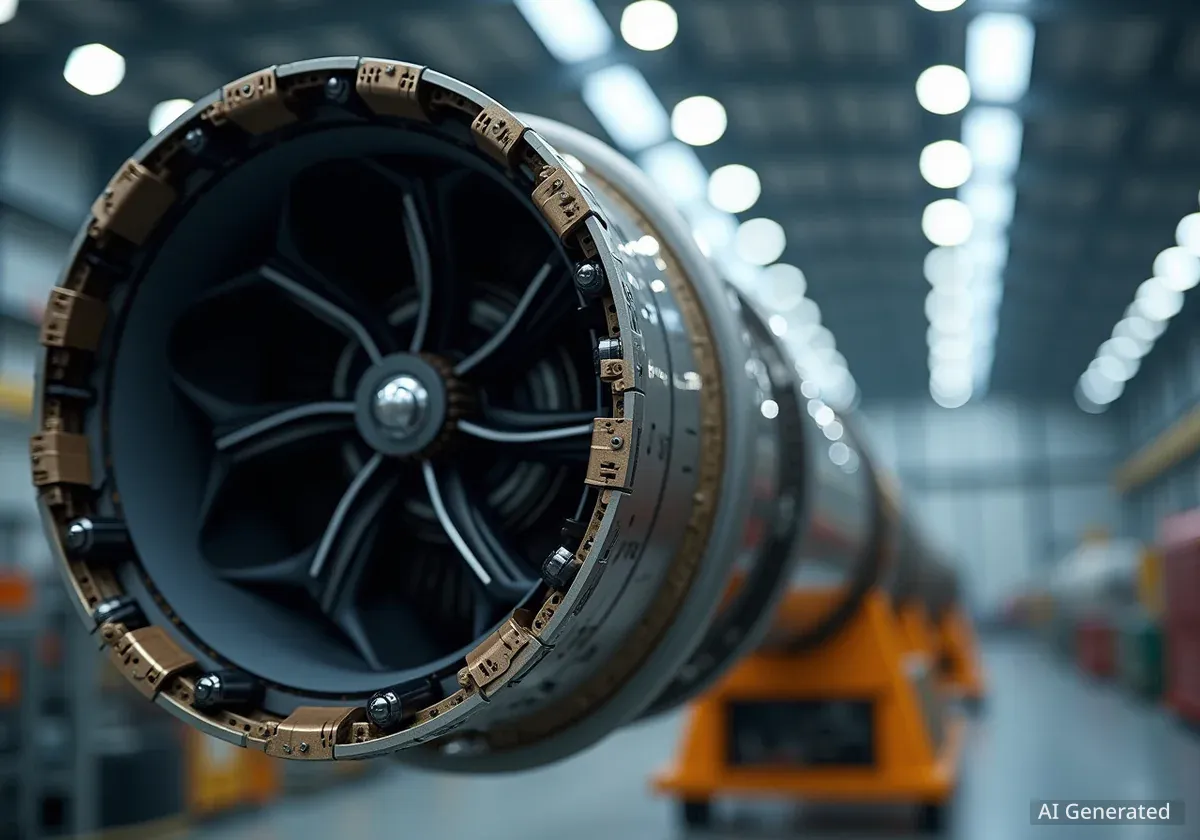Spanish aerospace company PLD Space has made significant progress in the development of its MIURA 5 orbital rocket, completing key design and safety reviews. The company is now advancing with subsystem qualification and has initiated semi-serial production, targeting demonstration flights in 2026 from the Guiana Space Centre in Kourou, French Guiana.
Key Takeaways
- PLD Space has completed the Critical Design Review for its MIURA 5 launch system.
- The company passed the first phase of Flight Safety Validation with CNES for launches from French Guiana.
- Production of key components, including engines and tanks, is underway, with a target of 30 launches per year by 2030.
- The first fully integrated MIURA 5 vehicle is expected to be ready before the end of the current year, with inaugural flights scheduled for 2026.
System-Wide Qualification and Production
Following the successful completion of the MIURA 5's Critical Design Review, PLD Space has entered a crucial phase of subsystem qualification. This stage involves rigorous testing across all major vehicle components, including engines, structures, avionics, and separation mechanisms. The company reports that production has transitioned to a semi-serial manufacturing model to streamline the assembly process.
Progress is evident in the hardware being produced. To date, eight complete propellant tanks for both the first and second stages of the rocket have been manufactured. This move signals a shift from one-off prototyping to a more standardized and scalable production flow, essential for meeting future launch demands.
Propulsion System Milestones
The propulsion division has achieved significant milestones, completing the first full units of its primary engines. This includes the 190 kN TEPREL-C main engine, which will power the rocket's first stage, and the TEPREL-Vac engine designed for the vacuum of space to propel the upper stage.
PLD Space aims to accelerate its engine production capacity significantly. The company has set a goal to manufacture one complete engine every 14 days by the end of 2025. This rate is critical for supporting the planned flight cadence and establishing a reliable supply chain for its launch vehicles.
A Focus on Rigorous Testing
PLD Space emphasizes a test-heavy approach to ensure vehicle reliability. According to company officials, every component is subjected to an exhaustive validation process before it is approved for flight. This philosophy is central to their strategy of achieving both speed and safety in development.
Extensive Testing and Validation
Raul Torres, CEO and Co-founder of PLD Space, highlighted the importance of this testing-focused methodology. He stated that this approach is fundamental to building a dependable launch vehicle.
"Reliability is built by testing. Every component, engine, and system undergoes an exhaustive validation process before flying. That's how you move fast - but safely," said Torres.
Hot-fire test campaigns are a cornerstone of this validation process. The company is conducting tests on the fully integrated TEPREL-CVac engine, as well as separate validation tests for critical components like turbopumps and gas generators. These tests provide essential data on performance and durability under flight-like conditions.
"The results from the TEPREL-CVac hot-fire tests we have conducted so far demonstrate the strength of the engine development know-how we have built internally over more than a decade," Torres added, underscoring the value of the company's in-house expertise.
Structural and Mechanical Trials
Beyond its engines, PLD Space has subjected other MIURA 5 hardware to demanding tests. The rocket's tanks have successfully undergone pressure, compression, and cryogenic trials to ensure they can withstand the extreme forces and temperatures of launch. Additionally, the fairing deployment and stage separation mechanisms have been repeatedly exercised as part of the overall vehicle qualification program.
Ground Infrastructure and Launch Operations
In parallel with vehicle development, PLD Space is establishing the necessary ground infrastructure. Civil works are currently underway for the MIURA 5 Launch Complex at the Guiana Space Centre (CSG) in Kourou. This makes PLD Space the first private company to construct a launch pad in the historic ELM-Diamant area of the European spaceport.
The company has also received crucial validation for its future operations. It successfully cleared the first phase of Flight Safety Validation with CNES, the French space agency, which manages the CSG. This approval is a critical step toward securing launch authorization from the European spaceport.
While construction proceeds in French Guiana, other key ground support elements are being fabricated in Spain. This includes the launch pad structure itself and the specialized maritime containers required to transport the rocket components to South America.
Commercial Strategy and Future Ambitions
PLD Space is actively positioning MIURA 5 as a leading European launch option for the small satellite market. The company has already opened its manifest for commercial flights, and several launch slots have been reserved by customers. The first demonstration flights are slated to begin in 2026, with a full commercial launch service to follow.
Key Figures and Growth
- Funding: Over 170 million euros raised.
- Supplier Investment: More than 50 million euros from 2024 to mid-2025.
- Workforce: Grew by 40% in 2025 to over 400 employees, with a projection of 420 by year-end.
- Launch Cadence Goal: 30 launches annually by 2030.
The company's growth is supported by a substantial financial and industrial base. With backing from over 170 million euros in funding and a network of 397 partners, PLD Space is making significant investments in its supply chain. From the start of 2024 to the first half of 2025, supplier investment is reported to be above 50 million euros.
This expansion is also reflected in its workforce, which has grown to more than 400 employees. Ezequiel Sanchez, Executive President of PLD Space, credited the team's efficiency for the rapid progress. "This is the team that made it possible to develop an orbital rocket in half the time of our international competitors," he said. "We are proving that we have what it takes to lead the next generation of space transportation."
PLD Space's long-term vision extends beyond the MIURA 5. The company's roadmap includes a family of reusable launchers and the development of the LINCE crewed capsule, signaling ambitions for human spaceflight. This strategy is supported by an expanding infrastructure network that includes facilities in Spain, French Guiana, and Oman.





